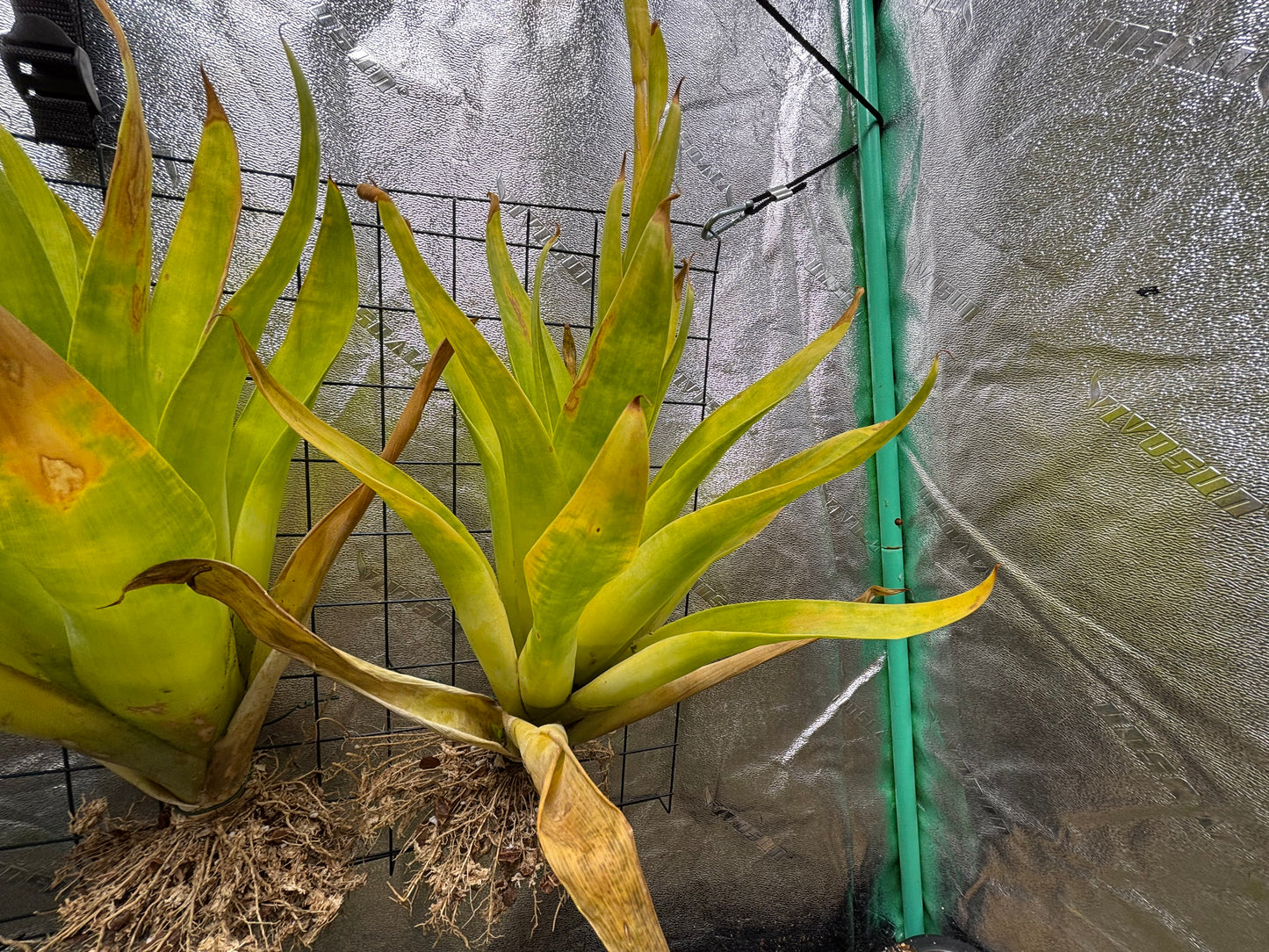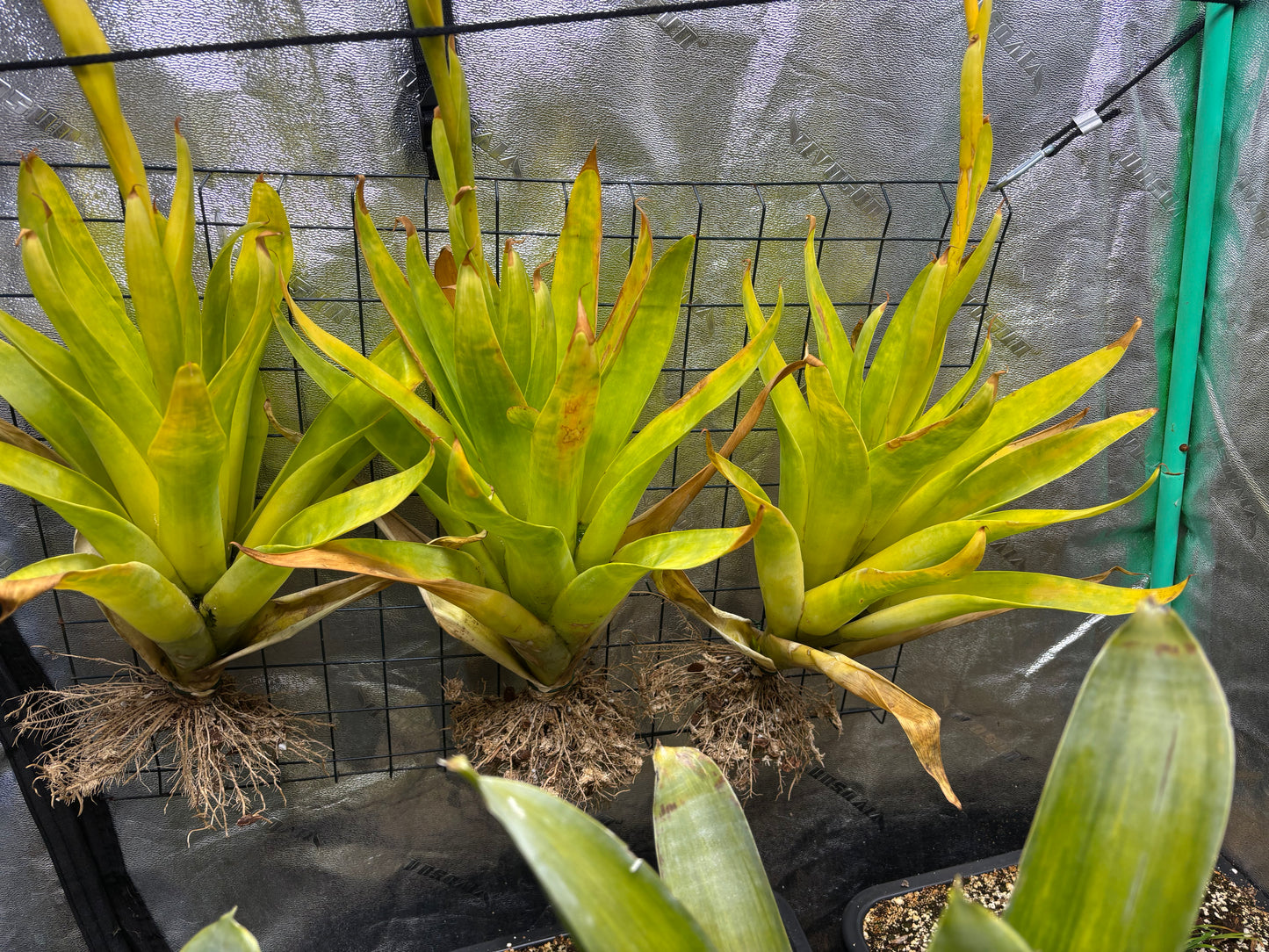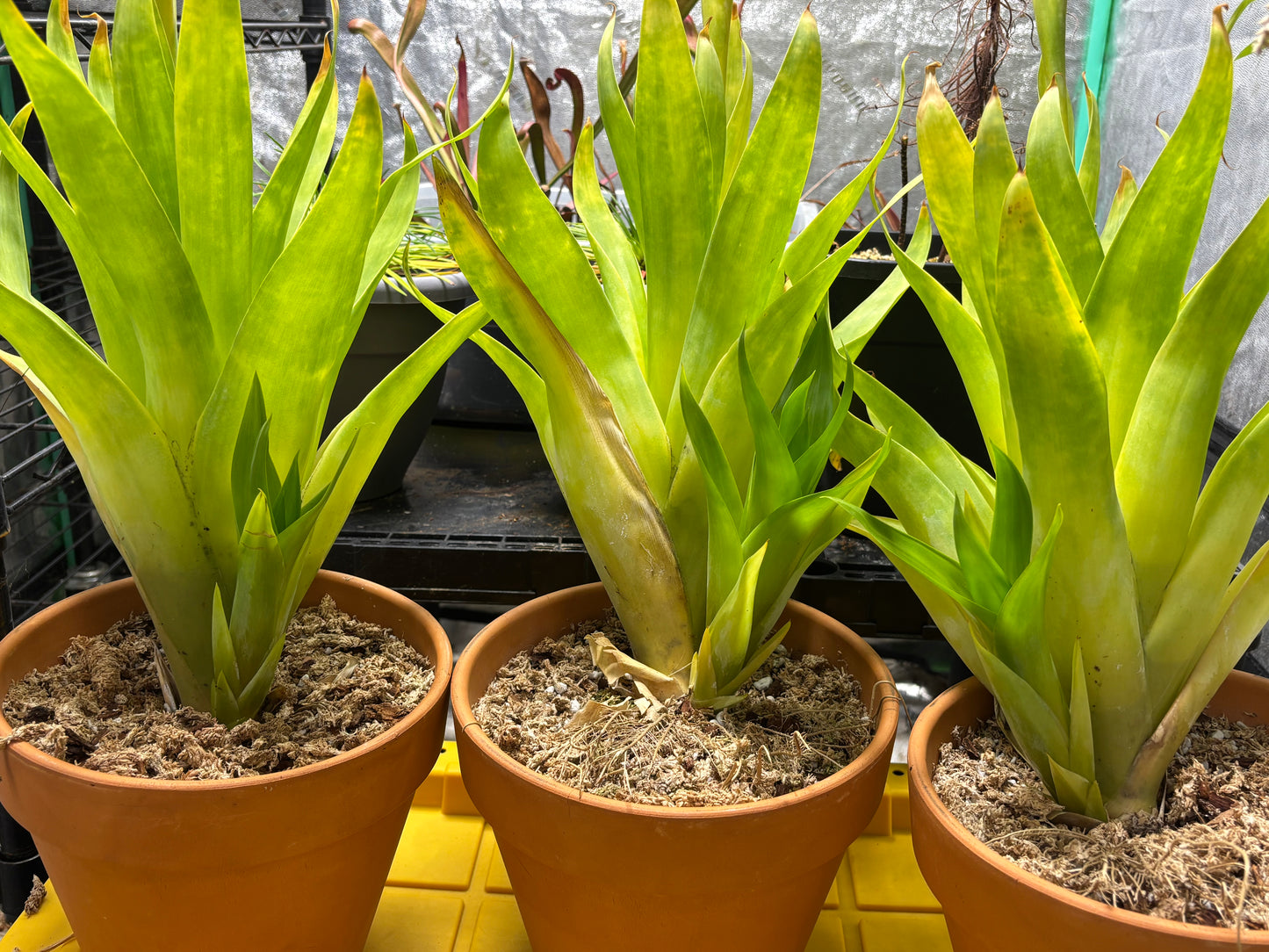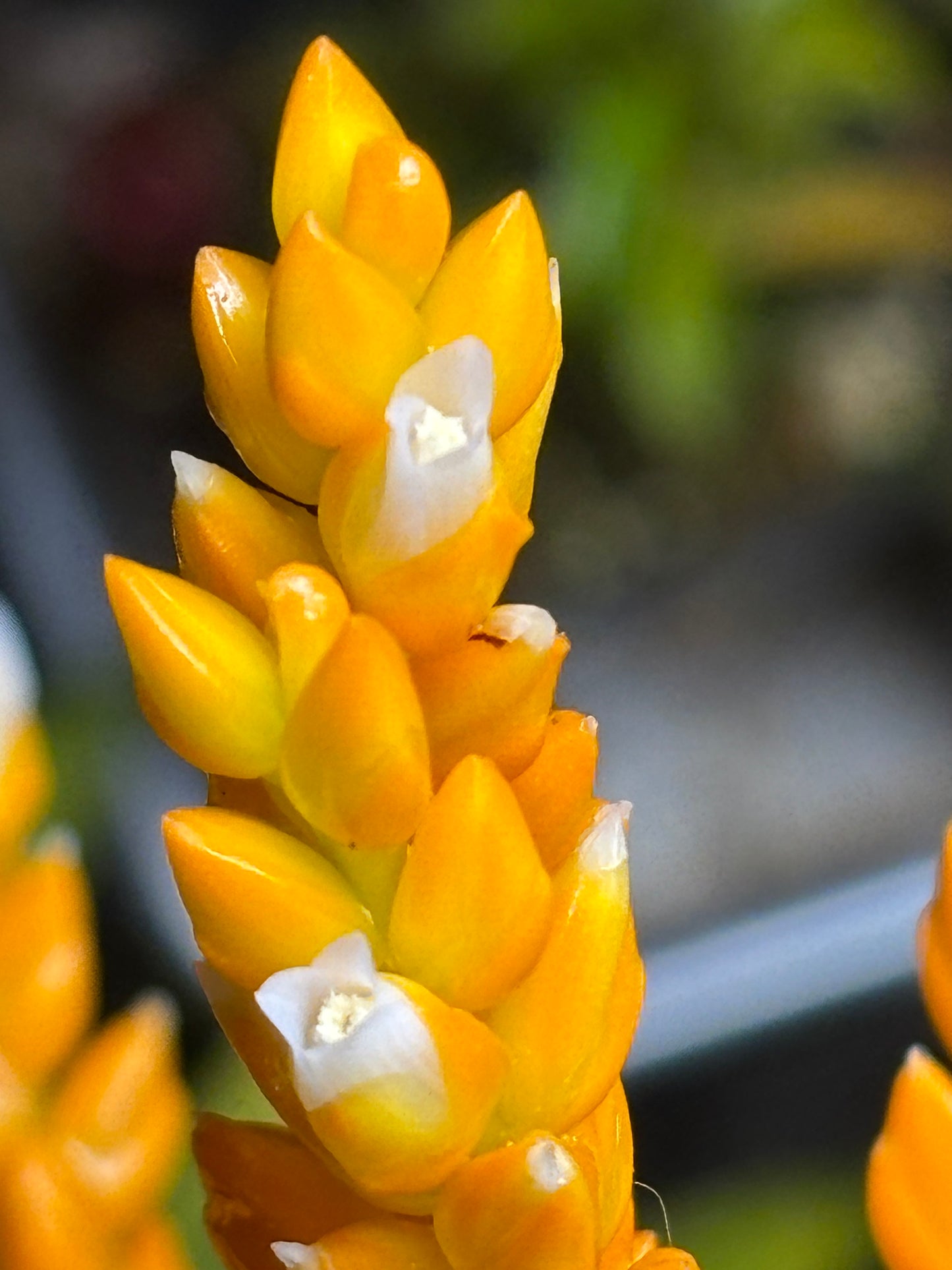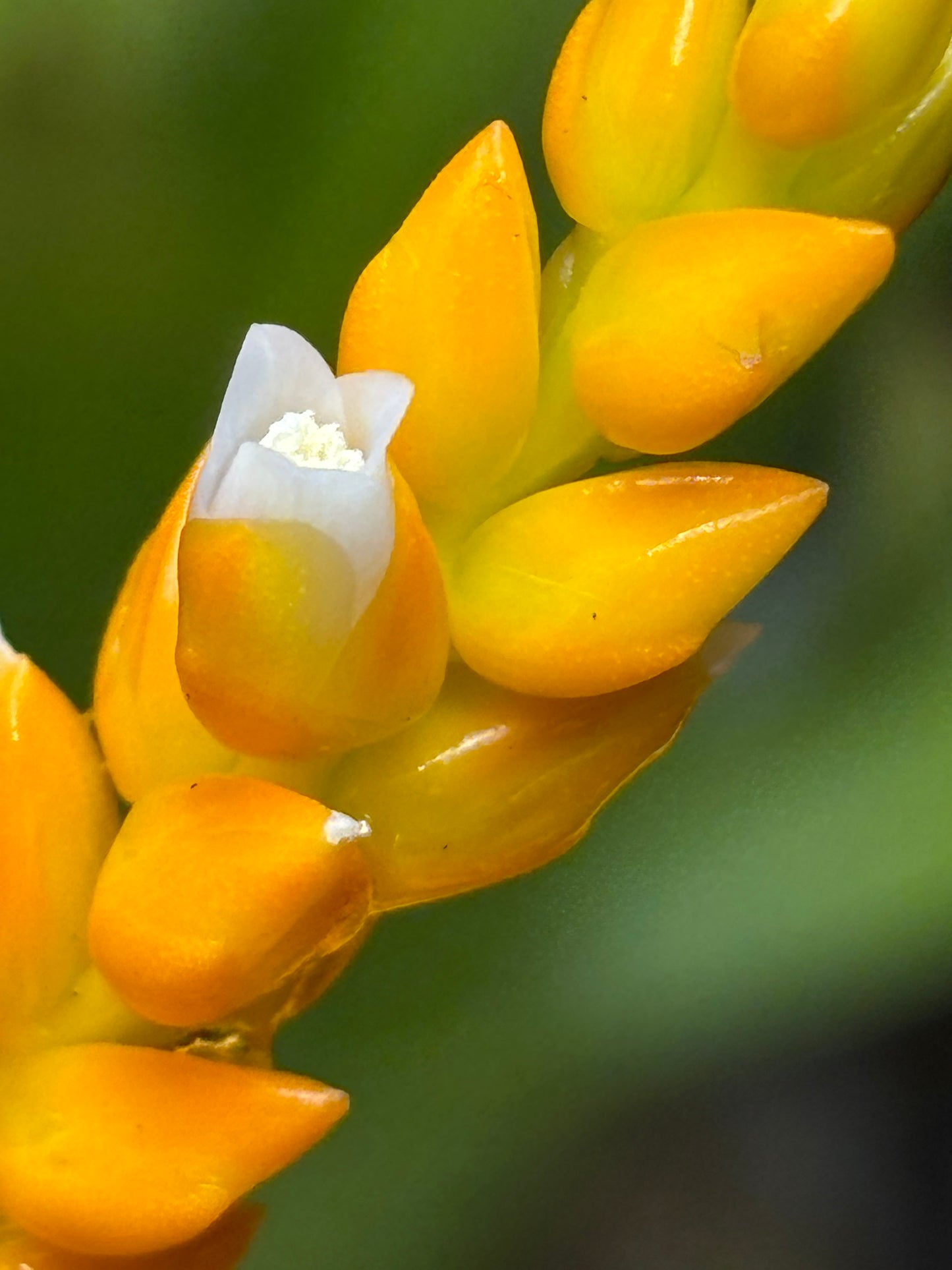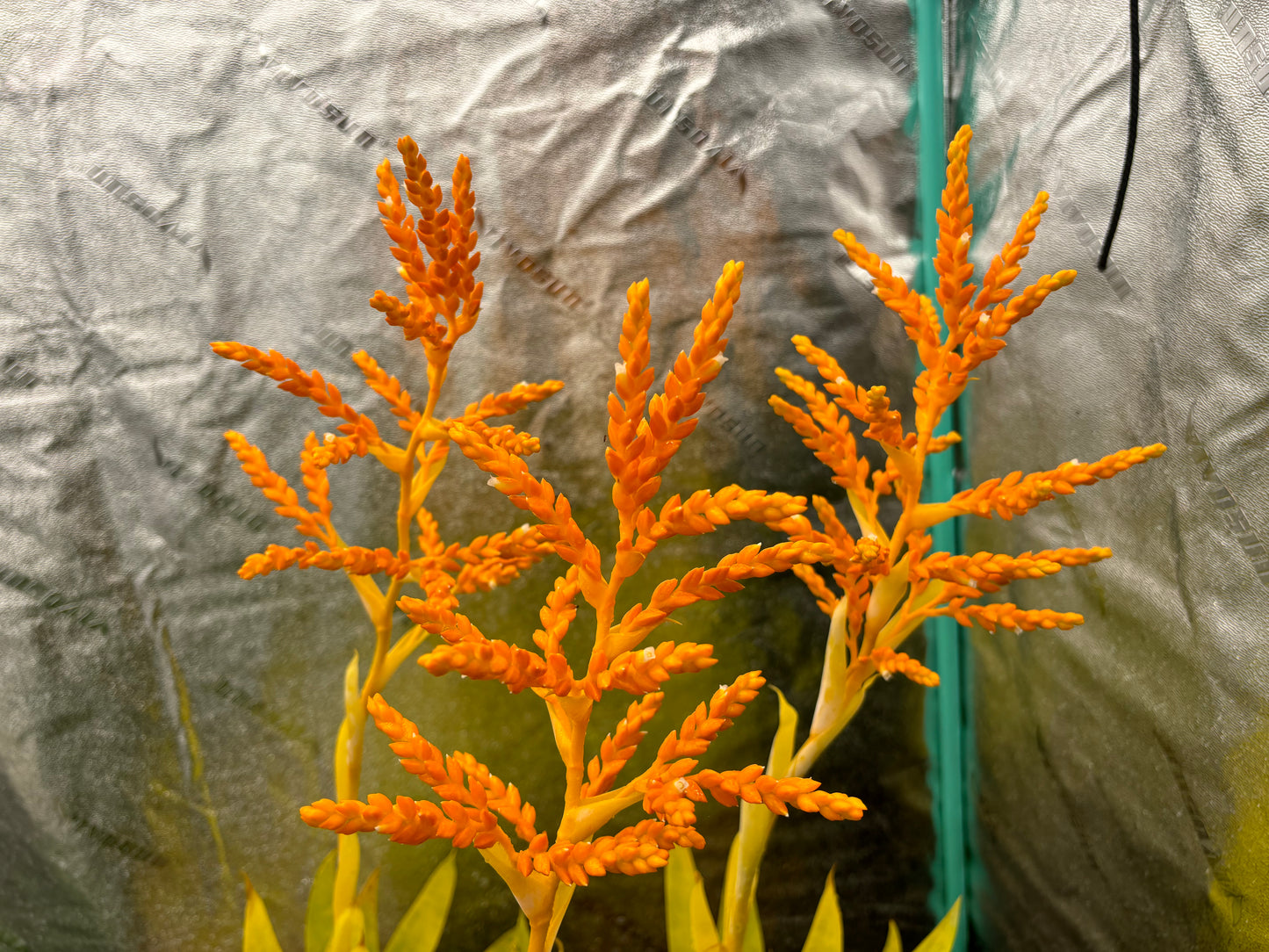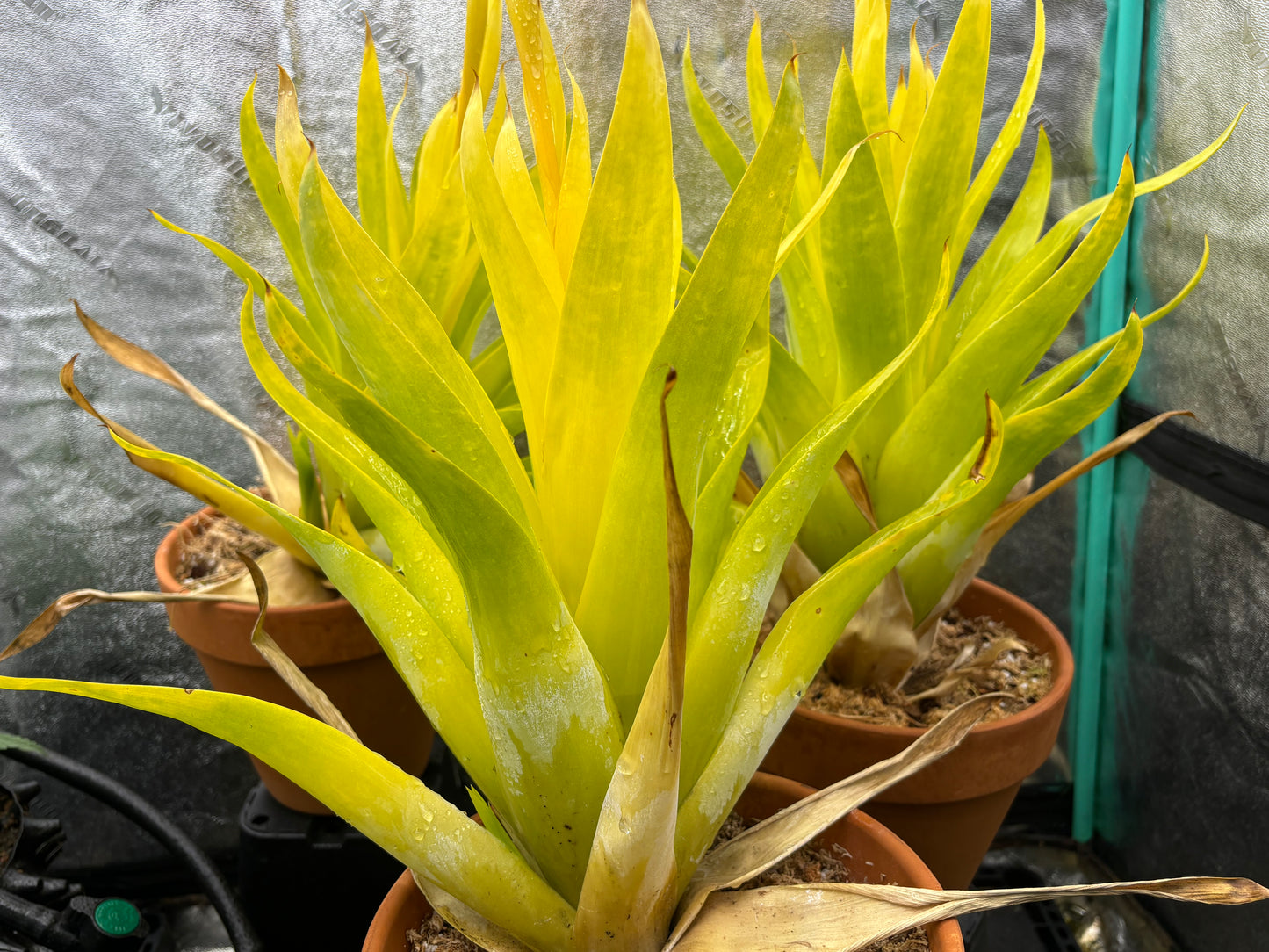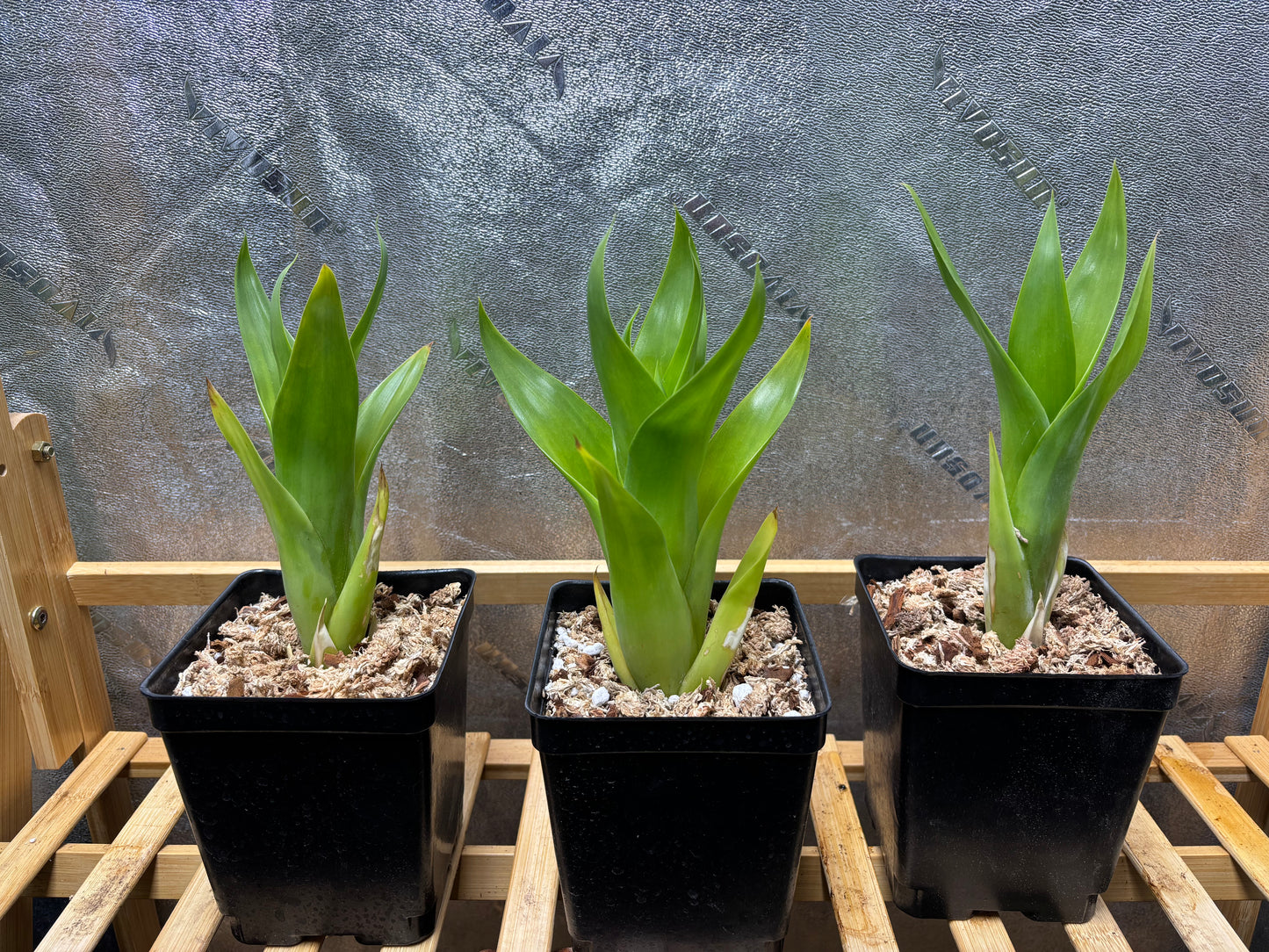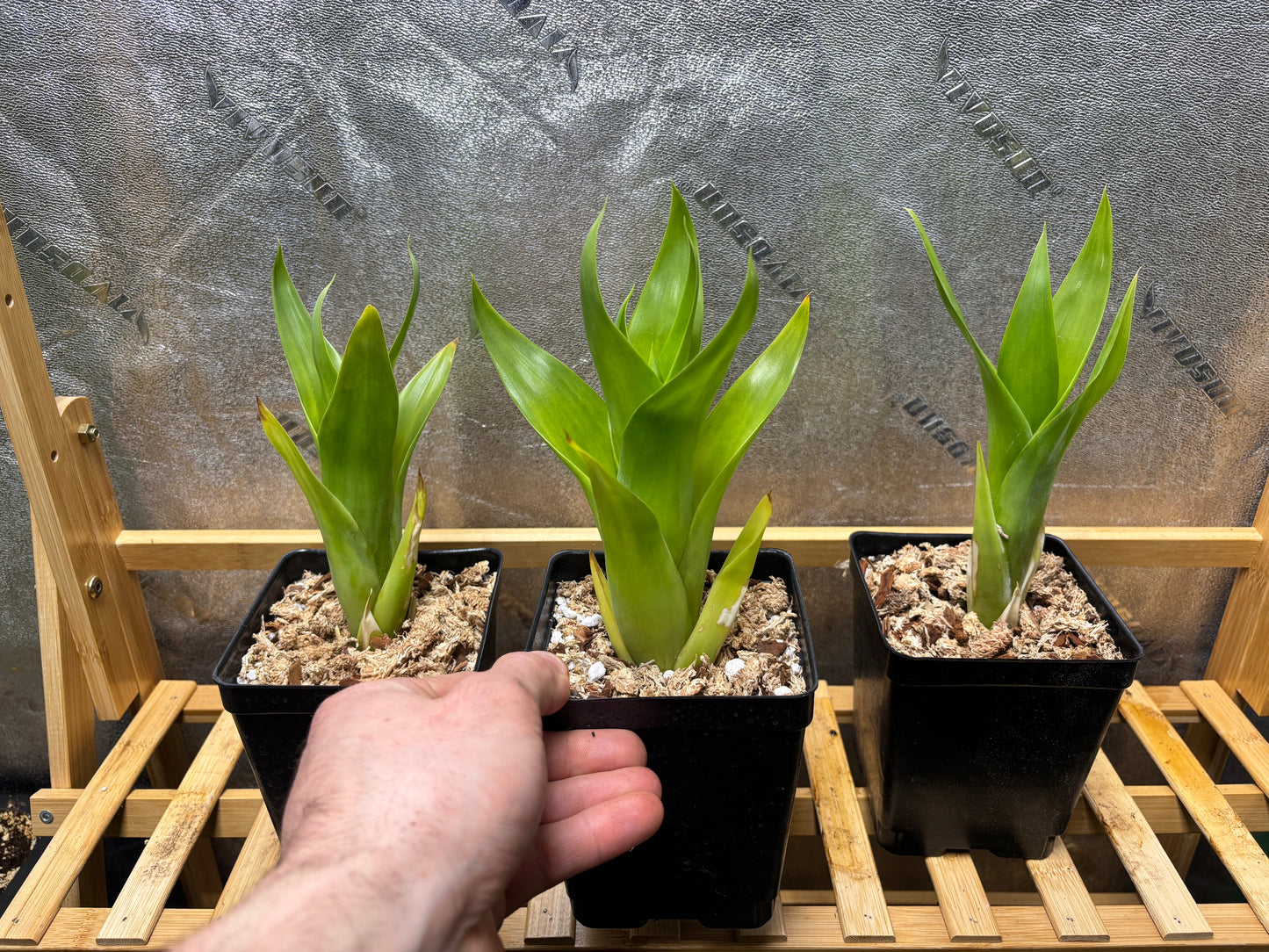Catopsis berteroniana
Catopsis berteroniana
Couldn't load pickup availability
SCIENTIFIC NAME: Catopsis berteroniana
COMMON NAME: Bromeliad. Tillandsia. Air plant.
PLACE OF ORIGIN: Ranges from Southern Florida to Venezuela.
GENERAL INFO: Catopsis berteroniana grows mostly epiphytically from trees throughout the tropical Americas. This species forms tightly restricted, labyrinthian leaf rosettes, which
with the help of smooth, waxy surfaces effectively capture insects in the water below. Can be grown
potted, in which the species can get quite large or epiphytically attached to vertical surfaces or hanging
pots. Treat much like other bromeliads and air plants, keeping water accumulated in the rosette
openings and minding humidity airflow and light based on your conditions.
WATER: Can be treated like a true air plant, but if using soil only allow it to become slightly damp. Lightly
mist the leaves to maintain humidity and ensure at least some water is maintained in the leaf water-
wells. This species forms tight leaf structures that hold water easily and aids in catching and absorbing
prey.
SOIL: We use Orchid fir-bark and sphagnum moss (70/30) in our potted specimen, but Catopsis can
mounted as true air-plants without any medium. (Specimen will grow much larger if planted in pots
with soil)
CONTAINERS: Air plants can rot if overwatered . Can be mounted vertically, tied to branches or climbing
trellises. If potted use terracotta or other well draining containers.
LIGHT: Flexible to light conditions. Will take on tighter, more yellow forms under intense light and
longer, curly green leaves in low light.
FERTILIZATION: We recommend using MAXSEA brand fertilizer for all carnivorous plants, as these
sensitive plants respond best to this formulation. The plants will naturally catch pests, and these can be
‘fed’ to the plant by simply dropping them into the water wells. Fertilize once every 2 weeks in spring
and summer, and once a month in winter. Never let fertilizer touch flowers
